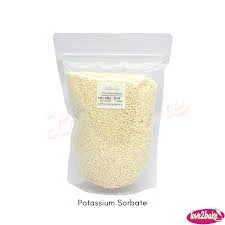
phosphoric acid acidity
Understanding the Acidity of Phosphoric Acid
Phosphoric acid, also referred to as orthophosphoric acid, is a colorless, odorless liquid that plays a pivotal role in various industrial applications. With the chemical formula H₃PO₄, this triprotic acid is extensively utilized in the food industry, agriculture, and chemical manufacturing. One of the critical aspects of phosphoric acid is its acidity, which determines its behavior in both chemical reactions and practical applications. Understanding the acidity of phosphoric acid is crucial for chemists, engineers, and industry professionals alike.
Structure and Properties
Phosphoric acid consists of three hydrogen ions (H⁺) that can be dissociated in an aqueous solution, allowing it to function as a proton donor. This characteristic is what gives phosphoric acid its acidic properties. The acid can be represented by the following equilibrium reactions
1. \( H₃PO₄ \leftrightarrow H⁺ + H₂PO₄⁻ \) 2. \( H₂PO₄⁻ \leftrightarrow H⁺ + HPO₄^{2-} \) 3. \( HPO₄^{2-} \leftrightarrow H⁺ + PO₄^{3-} \)
Each dissociation step has a corresponding dissociation constant, which indicates the strength of the acid. The first dissociation constant (K₁) is significantly larger than K₂ and K₃, indicating that the first hydrogen ion is released more readily compared to the subsequent ones. This triprotic nature allows phosphoric acid to interact with various substances, enhancing its utility in different applications.
Acidity and pH
The acidity of phosphoric acid is quantitatively expressed through its pH level. Pure phosphoric acid has a pH value of approximately 1-2, making it a relatively strong acid compared to other organic acids. However, due to its triprotic nature, its effective acidity can vary depending on the concentration and the presence of other ionic species in the solution.
In concentrated solutions, the pH may be extremely low, rendering it highly reactive with metals and other compounds. When diluted, however, the pH increases, decreasing its corrosiveness and making it suitable for applications such as food preservation, where a lower acidity may be desirable.
phosphoric acid acidity

Applications of Phosphoric Acid
Phosphoric acid’s acidity makes it an invaluable substance across many sectors. In the food industry, it is commonly employed as an acidity regulator, flavoring agent, and preservative. It adds a tangy flavor to soft drinks and processed foods, and its antibacterial properties help inhibit the growth of undesirable microorganisms.
In agriculture, phosphoric acid is a key ingredient in fertilizers. It contributes essential phosphorous, which is vital for plant growth and is a principal component of many organic compounds like ATP (adenosine triphosphate), which plants utilize in energy transfer and photosynthesis.
Moreover, in industrial applications, phosphoric acid is used in metal treatment and cleaning processes. Its ability to dissolve rust and scale makes it valuable in maintaining and refurbishing machinery. It is also pivotal in the production of phosphate esters, which are used as surfactants and plasticizers.
Safety and Handling
Despite its widespread use, the acidity of phosphoric acid necessitates careful handling. It can cause burns upon contact with skin or in the eyes, and inhalation of its vapors may lead to respiratory distress. Therefore, wearing appropriate personal protective equipment (PPE) such as gloves, goggles, and masks is recommended in industrial and laboratory settings.
When working with phosphoric acid, it is important to consider its concentration and the potential reactions with other materials. Proper storage in labeled containers, away from incompatible substances, is necessary to ensure safety.
Conclusion
Phosphoric acid is a crucial chemical compound with significant acidity that impacts its myriad applications across various industries. Its ability to act as a triprotic acid lends it versatility, allowing for different functional uses ranging from food production to agricultural fertilizers and industrial cleaning agents. Understanding its acidity not only aids in optimizing its use but also emphasizes the need for safety and proper handling. As industries continue to explore efficient ways to utilize this essential compound, acknowledging its acidic properties remains fundamental to its success and application in modern technology and daily life.
-
Aluminum Hydroxide: Quality Gels & Dried Gel AntacidNewsAug.31,2025
-
Buy High-Quality Trichloroisocyanuric Acid for Sale | TCCA 90% SupplierNewsAug.30,2025
-
Pure Sodium Dichloroisocyanurate Dihydrate | Powerful DisinfectantNewsAug.29,2025
-
Industrial Chemicals: Quality & Purity for Every IndustryNewsAug.28,2025
-
Nitrile Rubber Honoring Strict Production StandardsNewsAug.22,2025
-
Aspartame Ingredients Honoring Food Safety ValuesNewsAug.22,2025
-
Fertilizer for Balanced Plant NutritionNewsAug.22,2025
Hebei Tenger Chemical Technology Co., Ltd. focuses on the chemical industry and is committed to the export service of chemical raw materials.
-

view more DiethanolisopropanolamineIn the ever-growing field of chemical solutions, diethanolisopropanolamine (DEIPA) stands out as a versatile and important compound. Due to its unique chemical structure and properties, DEIPA is of interest to various industries including construction, personal care, and agriculture. -

view more TriisopropanolamineTriisopropanolamine (TIPA) alkanol amine substance, is a kind of alcohol amine compound with amino and alcohol hydroxyl, and because of its molecules contains both amino and hydroxyl. -

view more Tetramethyl Thiuram DisulfideTetramethyl thiuram disulfide, also known as TMTD, is a white to light-yellow powder with a distinct sulfur-like odor. It is soluble in organic solvents such as benzene, acetone, and ethyl acetate, making it highly versatile for use in different formulations. TMTD is known for its excellent vulcanization acceleration properties, which makes it a key ingredient in the production of rubber products. Additionally, it acts as an effective fungicide and bactericide, making it valuable in agricultural applications. Its high purity and stability ensure consistent performance, making it a preferred choice for manufacturers across various industries.





